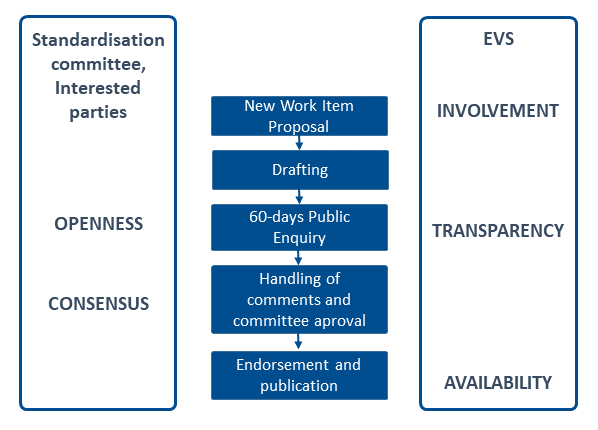Drafting a home-grown standard
- Drafting can be initiated by any interested party.
- The drafting is possible if no relevant European and/or international Standard exists within the scope of the proposed standard.
- The drafting process is described in guide EVS JUHEND 2 (see also guide EVS JUHEND 4).
How to draft a home-grown standard?
- To initiate the drafting of an Estonian standard, you should submit a formal new work item proposal.
- Upon approval of the proposal, a standard draft is typically compiled by a committee’s expert group or experts registered at the Estonian Centre for Standardisation and Accreditation.
- The standard draft text, approved by the committee, is submitted to the Estonian Centre for Standardisation and Accreditation for conducting the public enquiry. A notification about the start of the enquiry is published in EVS Bulletin and the text of the standard draft is made available for reading and commenting in the comments portal of the Estonian Centre for Standardisation and Accreditation. The public enquiry lasts for 60 days.
- Once the public enquiry is over, a summary is made of the received comments/proposals and the received input is analysed.
- A standard draft that has achieved consensus in the committee is submitted to the Estonian Centre for Standardisation and Accreditation to be confirmed and published as a standard.
Drafting the EVS/TS
The EVS technical specification (EVS/TS) is a standard-like document drafted based on the rules for drafting a home-grown standard, although it does not have the status of an Estonian standard. A TS can be drafted in case there is no valid European and/or Estonian standard with the same scope and their drafting has not been planned either.
I.e, an EVS/TS can be drafted to describe a technology/method being developed and/or tested.
Stages of drafting a home-grown standard and an EVS/TS

